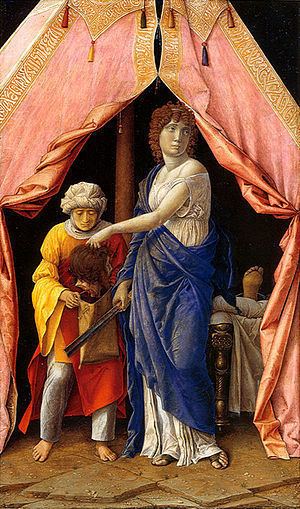Year c. 1495 Created 1495 | Artist Andrea Mantegna | |
 | ||
Type Tempera with gold and silver on panel Dimensions 30.6 cm × 19.7 cm (12.0 in × 7.8 in) Location National Gallery of Art, Washington Similar Andrea Mantegna artwork, Other artwork | ||
Gentileschi judith and holofernes
Judith and Holofernes is a painting by the Italian Renaissance artist Andrea Mantegna, painted about 1495, depicting the common subject in art of Judith beheading Holofernes.
Contents
History
The painting has been dated through comparison with similar grisaille panels with Old Testament subjects, produced by Mantegna around 1495 and 1500.
The work was perhaps included in the Gonzaga collection acquired by Charles I of England in 1628. Given to William Herbert, 6th Earl of Pembroke, it was inherited by his heirs until it was sold in London in 1917. After a series of different owners, it was acquired in New York City by Joseph E. Widener in 1923. In 1942 it was donated to the National Gallery of Art in Washington, DC.
Description
The panel has brilliant and variegated colors, resembling a miniature. Judith is portrayed standing under the pink tent of Holofernes (whose foot can be seen on the right) immediately after beheading him, still holding the blade. She is dropping the head into a sack held by a maid.
The ground, painted in diagonal perspective, is composed of stone and earth slabs, some of which are out of position. It is painted with tempera with gold and silver.
